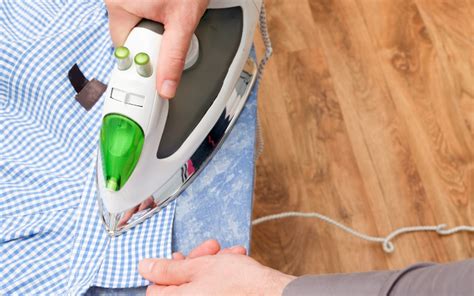How To Use Starch When Ironing
Ronan Farrow
Mar 20, 2025 · 3 min read

Table of Contents
How to Use Starch When Ironing: A Guide to Crisp, Professional-Looking Results
Starching your clothes might seem like an old-fashioned chore, but it's a surprisingly effective way to achieve a crisp, professional look that's hard to replicate otherwise. This guide will walk you through how to use starch when ironing, covering different types of starch and application methods to help you achieve the perfect finish for your clothes.
Understanding the Benefits of Using Starch
Before we dive into the how-to, let's quickly review why you might want to starch your clothes in the first place:
- Crispness and Body: Starch adds stiffness and body to fabrics, making them look sharper and more refined. This is especially beneficial for items like collars, cuffs, and pleats.
- Wrinkle Resistance: A light starching can help fabrics resist wrinkles, keeping your clothes looking neat and presentable for longer.
- Enhanced Appearance: Starch can give a subtle sheen to certain fabrics, improving their overall appearance and making them look more polished.
- Professional Finish: For formal wear or items requiring a crisp, clean look, starching is a valuable technique to achieve a truly professional finish.
Types of Starch: Choosing the Right One for Your Needs
Several types of starch are available, each with its own characteristics:
1. Liquid Starch: The Convenient Choice
- Ease of Use: Liquid starch is generally the easiest to use, requiring minimal preparation and readily available in spray bottles for even application.
- Level of Stiffness: It offers a range of stiffness, from light to heavy, depending on the brand and the dilution. You can usually control this by adjusting the concentration of the starch solution.
- Best for: Most fabrics, particularly those that don't require extreme stiffness.
2. Powdered Starch: For a More Intense Finish
- Intensity: Powdered starch generally provides a stronger, more intense stiffness than liquid starch.
- Preparation: Requires mixing with water according to the package instructions before use. Careful mixing is key to avoid lumps.
- Best for: Fabrics that need a very crisp, stiff finish, such as collars, cuffs, and tablecloths.
3. Spray Starch: Quick and Easy Application
- Convenience: Spray starch is incredibly convenient, offering a quick and even application without the mess of mixing powders or liquids.
- Stiffness: Often provides a lighter stiffness compared to powdered starch.
- Best for: Quick touch-ups or for fabrics that only need a light stiffening.
How to Starch and Iron Your Clothes: A Step-by-Step Guide
Regardless of the type of starch you choose, the ironing process remains fairly consistent:
- Prepare the Starch: Follow the manufacturer's instructions for mixing powdered starch or diluting liquid starch. Ensure the solution is free of lumps. For spray starch, simply shake well.
- Pre-Treat Stains: Always pre-treat any stains before starching and ironing to avoid setting them.
- Apply the Starch: Evenly spray or apply the starch to the garment, avoiding over-saturation. For liquid or powdered starch, it's best to work in sections. Let the starch soak for a few minutes to allow for proper penetration. Pay close attention to areas that require extra crispness, such as collars and cuffs.
- Ironing: Iron the garment while it's still slightly damp. A cool or warm iron is usually sufficient. Hot irons can scorch starched fabrics. Work in sections, ensuring each area is completely dry before moving on. Use a pressing cloth if necessary to avoid scorching delicate fabrics.
Troubleshooting Common Issues
- Too Stiff: If your garment is too stiff, try using less starch next time or using a lighter starch solution.
- Uneven Stiffness: Ensure even application of the starch solution. For spray starch, maintain a consistent distance and use gentle sweeps.
- Yellowing: This can be caused by using too much starch or using a hot iron. Always follow the manufacturer's instructions and use a cool or warm iron.
By following these steps and selecting the right type of starch for your needs, you can achieve professionally crisp, wrinkle-resistant clothes that look their absolute best. Remember, practice makes perfect! Experiment with different starches and techniques to find the perfect balance for your clothing and ironing style.
Featured Posts
Also read the following articles
| Article Title | Date |
|---|---|
| How Do You Clean A Skylight | Mar 20, 2025 |
| How Can I Stop A Sheriff Sale On My Home | Mar 20, 2025 |
| Raz Tn9000 How To Use | Mar 20, 2025 |
| How Can I Find A Seller On Amazon | Mar 20, 2025 |
| How Do I Believe In God Again | Mar 20, 2025 |
Latest Posts
Thank you for visiting our website which covers about How To Use Starch When Ironing . We hope the information provided has been useful to you. Feel free to contact us if you have any questions or need further assistance. See you next time and don't miss to bookmark.
